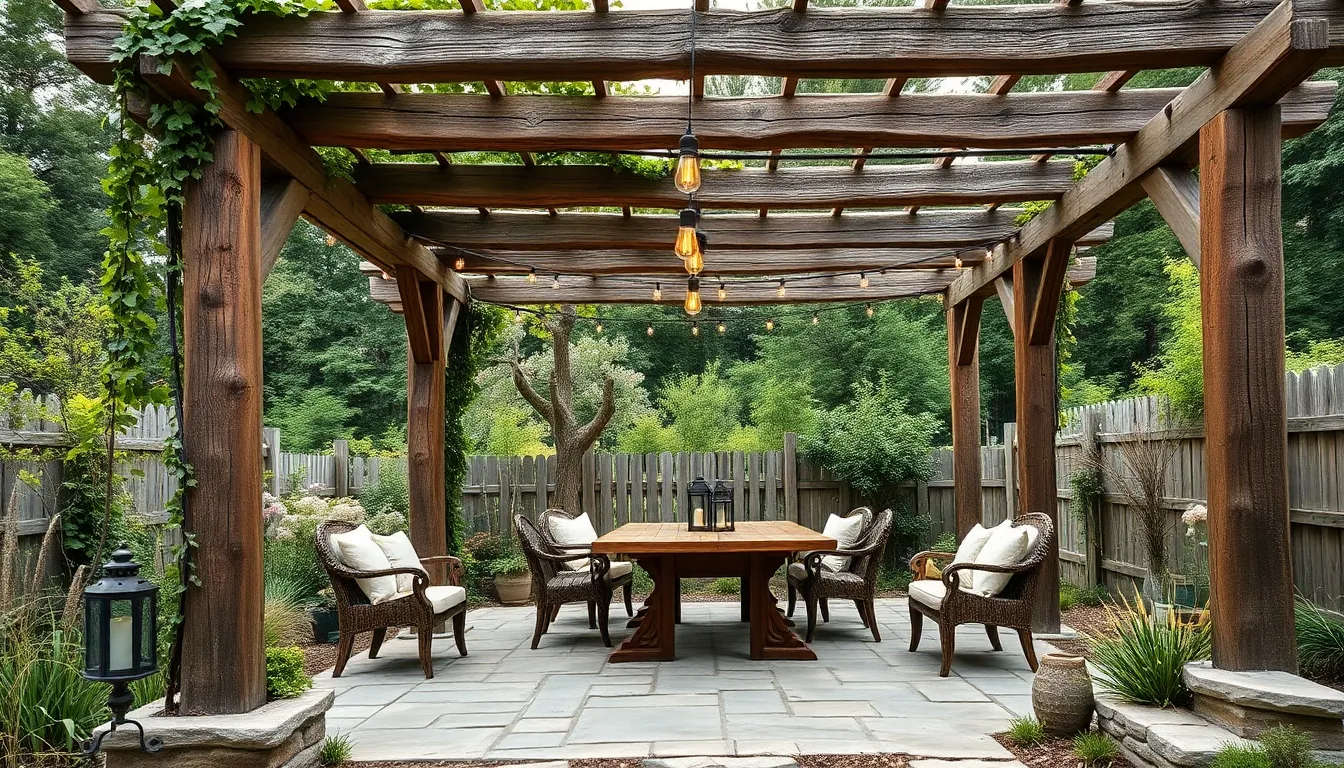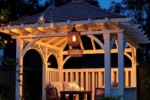Creating a rustic pergola is a wonderful way to blend structure with the natural beauty of your garden, offering both charm and functionality. Whether you’re just starting to explore outdoor design or looking to enhance an established space, a pergola can become the heart of your garden’s story.
In this article, you’ll discover practical ideas and thoughtful tips to build or choose a pergola that complements your landscape’s organic feel. From selecting the right materials to incorporating greenery, you’ll find inspiration and guidance to craft an inviting outdoor retreat that feels effortlessly connected to nature.
Choosing Natural Materials for Pergolas
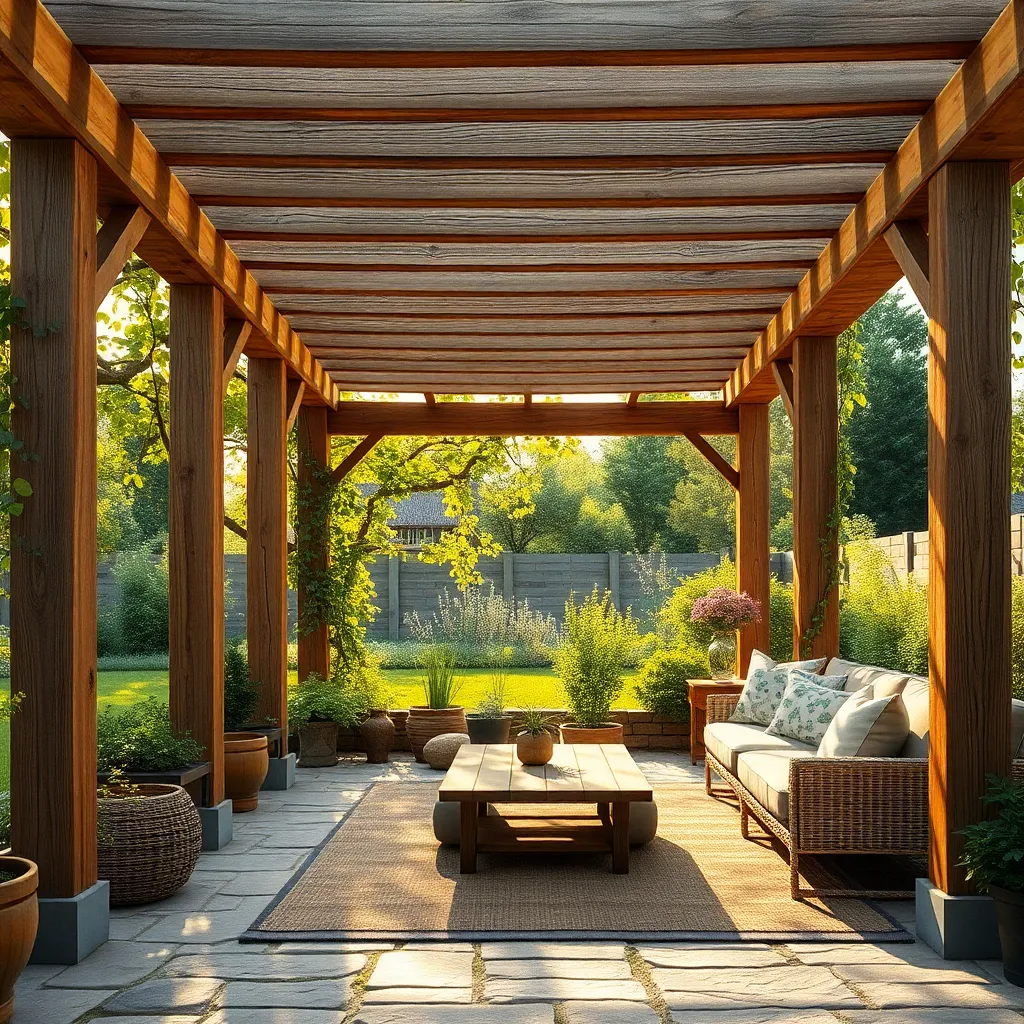
When choosing natural materials for a rustic pergola, opt for durable woods like cedar, redwood, or pressure-treated pine that resist rot and insects. For a truly authentic look, consider using reclaimed timber or rough-hewn beams to add texture and character. Keep in mind that wood dimensions around 4×4 or 6×6 inches for posts and 2×6 or 2×8 inches for rafters provide strong support while maintaining a natural scale.
To enhance both longevity and rustic charm, treat your wood with natural oils or non-toxic sealants that protect against weather without compromising appearance. Incorporate simple joinery like mortise-and-tenon or metal brackets for sturdy construction, and consider adding climbing plants like wisteria or grapevine to soften edges and create a living canopy. These elements combine to build a pergola that blends seamlessly into natural garden settings while standing up to outdoor conditions.
Designing Pergolas to Blend With Gardens
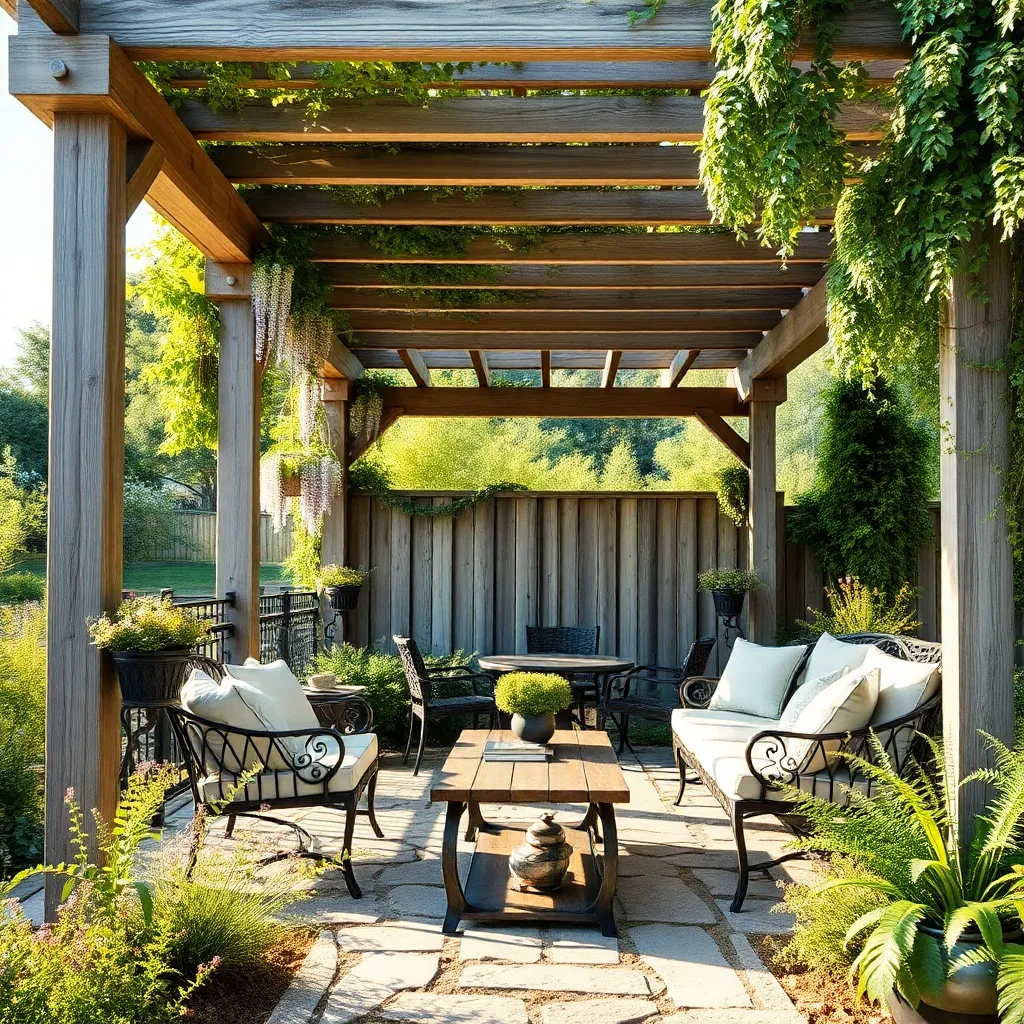
To seamlessly blend a pergola with your garden, start by selecting natural wood types like cedar or redwood that age gracefully and complement surrounding plants. Keep dimensions proportional—typically, a height of 8 to 10 feet and a width that matches adjacent pathways or garden beds helps the structure feel integrated rather than imposing. Incorporate design elements such as curved beams or lattice sides to mimic organic shapes found in nature, enhancing the rustic appeal.
Enhance the connection between your pergola and garden by adding climbing plants like wisteria or clematis, which provide seasonal interest and soften hard lines. For advanced styling, consider using reclaimed wood or rough-hewn timber to add texture and history to your structure. Ensure posts are securely anchored with concrete footings to withstand weather while maintaining a natural, handcrafted look through visible joinery or wrought iron accents.
Incorporating Vines and Greenery
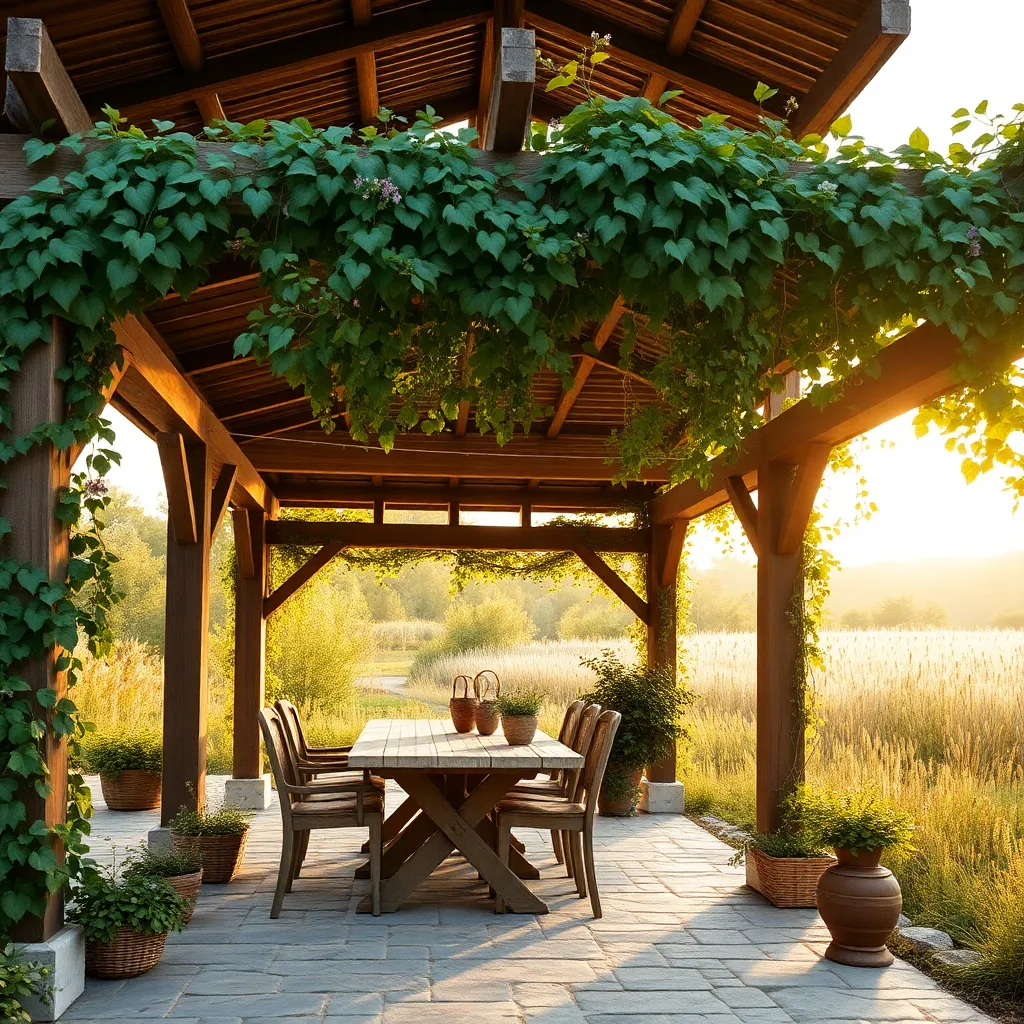
Enhance your rustic pergola by
To create a lush, immersive green canopy, consider layering vines with trailing greenery like ivy or jasmine around the pergola posts and crossbeams.
Rustic Pergola Lighting Ideas
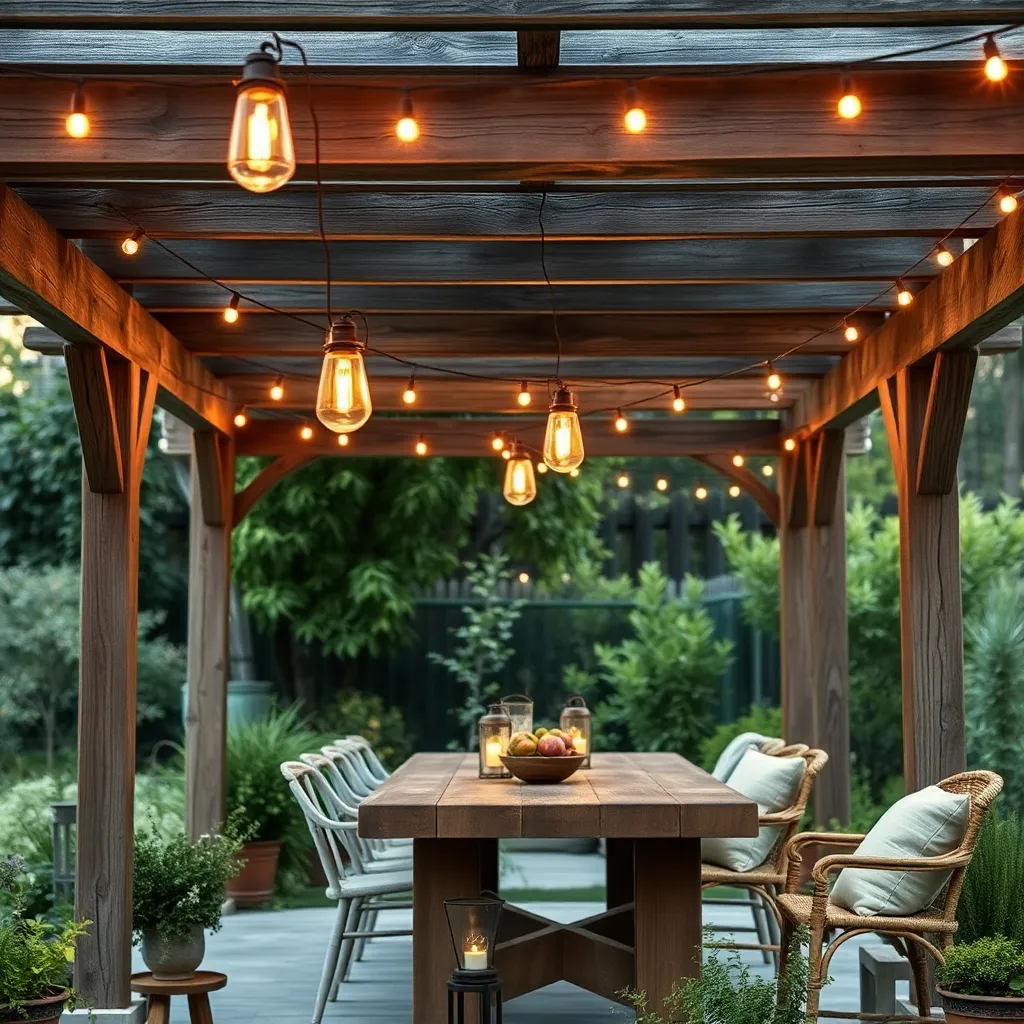
To enhance the cozy charm of a rustic pergola, consider using warm-toned string lights or Edison bulbs that complement natural wood tones. Attach these lights along the pergola beams or weave them through climbing vines for a soft, inviting glow. For durability, choose weather-resistant, outdoor-rated wiring and fixtures to ensure your lighting withstands seasonal changes.
For a more advanced touch, incorporate solar-powered lanterns or low-voltage LED spotlights aimed at highlighting key features like wooden posts or surrounding greenery. Mount fixtures with adjustable brackets to customize light angles throughout the year. Remember to plan your wiring layout in advance and conceal cables within the structure for a neat, integrated look that maintains the pergola’s rustic aesthetic.
Maintaining Rustic Pergolas Naturally
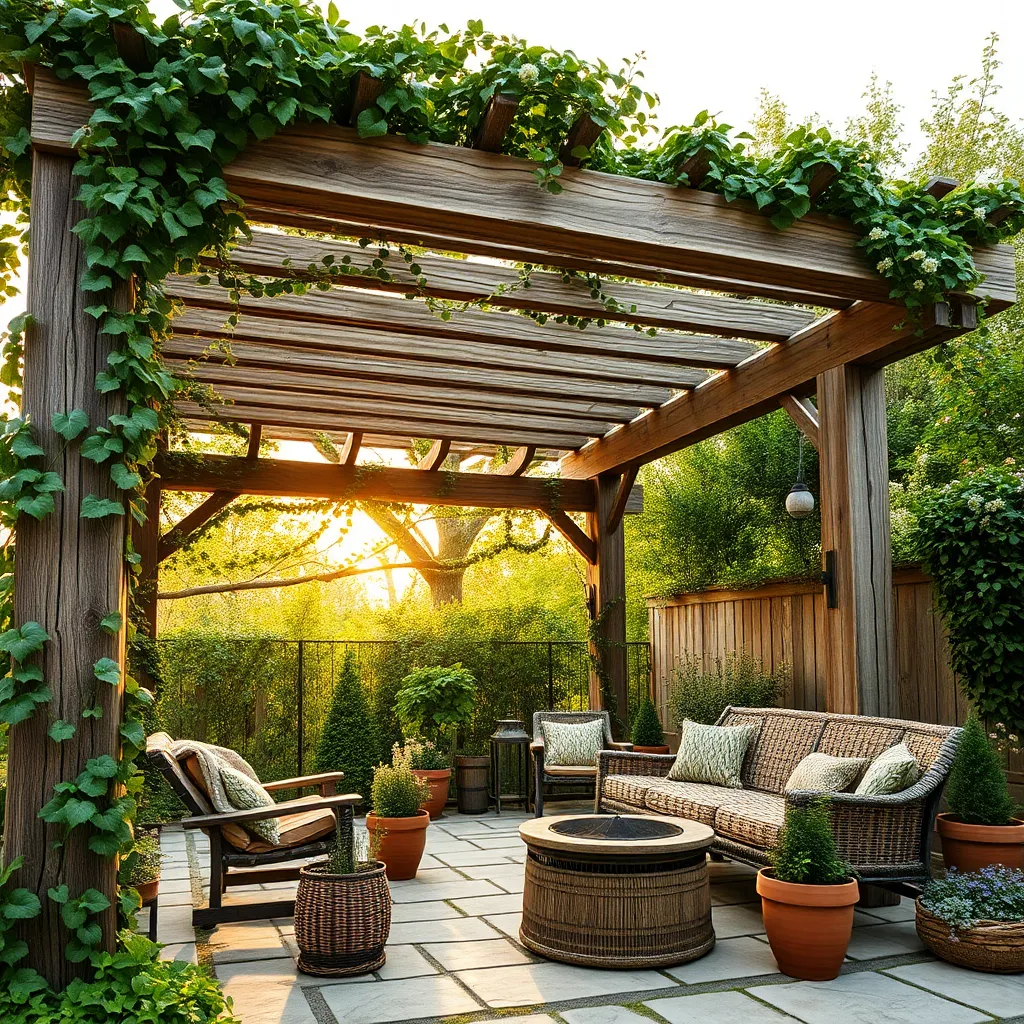
Start maintaining your rustic pergola by choosing natural, weather-resistant materials such as cedar or redwood, which are less prone to rot and insect damage. Regularly apply a non-toxic, clear wood sealant every 1-2 years to protect the wood while preserving its natural look and texture. For beginners, ensure the pergola posts are securely anchored in concrete footings at least 24 inches deep to prevent shifting from wind or soil movement.
Enhance longevity by incorporating climbing plants like wisteria or grapevines that provide shade and help maintain moisture balance around the wood. Advanced gardeners can integrate a simple drip irrigation system along the beams to keep the wood hydrated without overwatering the ground. Lastly, routinely inspect for signs of wear or insect activity and address issues promptly to keep your rustic pergola both beautiful and sturdy for years to come.
Conclusion: Creating Beautiful Outdoor Spaces
In exploring Rustic Pergola Designs for Natural Gardens, we’ve uncovered five key relationship concepts: creating a nurturing space, embracing natural beauty, fostering open communication, building strong foundations, and encouraging shared growth. Just as a pergola supports climbing vines and invites connection, your relationship thrives when you cultivate an environment rooted in trust and care.
Today, take a simple but meaningful step—design a cozy outdoor spot where you and your partner can unwind and connect, inspired by rustic charm and nature’s tranquility. This small act can spark deeper conversations and shared moments.
Be sure to save or bookmark this article as a go-to guide whenever you want to refresh your relationship space or seek inspiration for nurturing your bond. Remember, strong relationships, like flourishing gardens, grow with intention and patience. By embracing these concepts, you’re planting seeds for lasting love and happiness ahead.
You have the power to cultivate a relationship that blossoms beautifully—one natural step at a time. Keep nurturing, keep growing!

